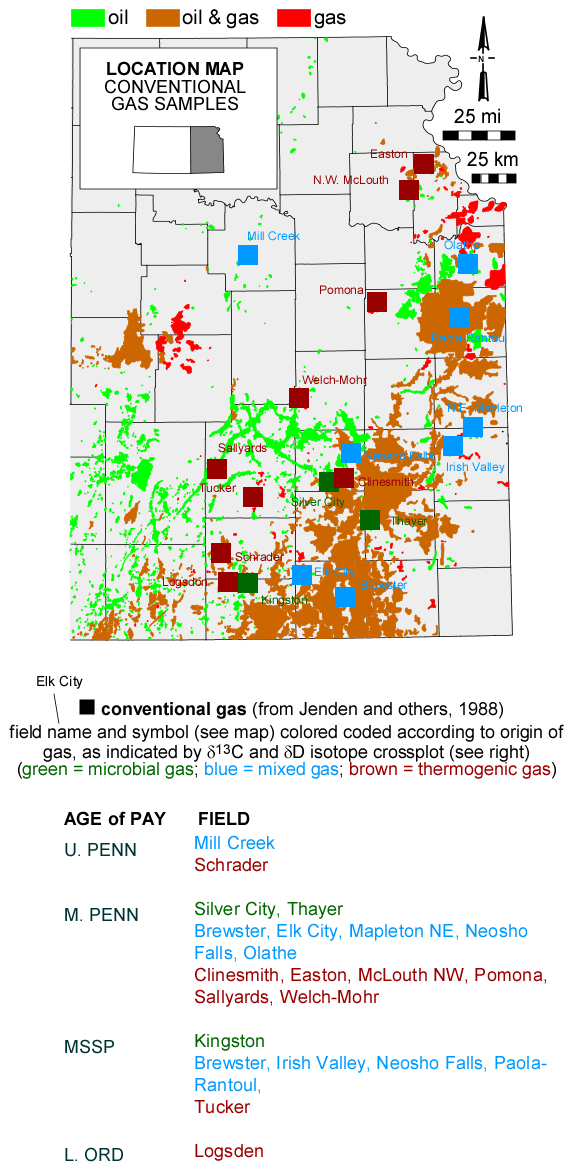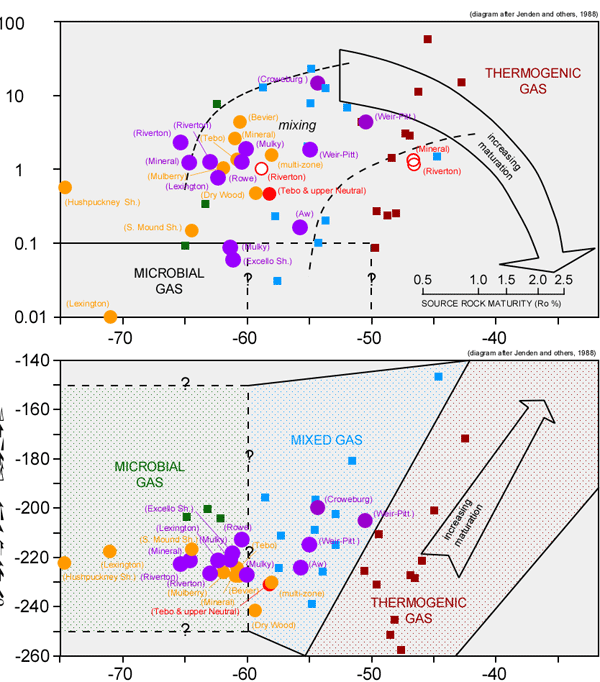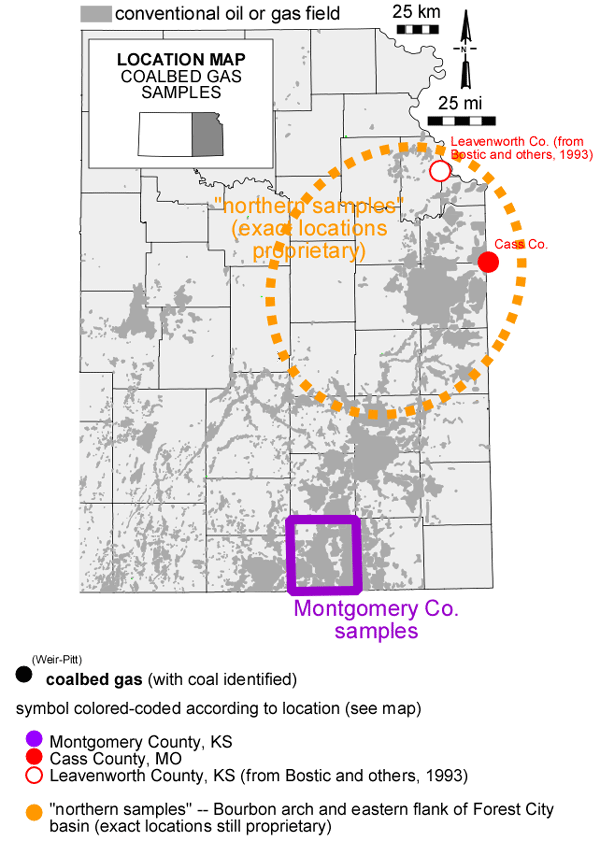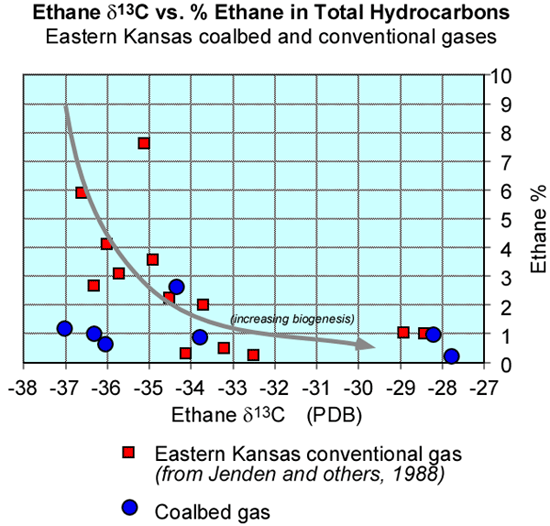
Gas Isotopic Data
A crossplot of methane ![]() and the
and the ![]() can be used to infer
gas origin. Thermogenic methane carbon is typically isotopically heavy (i.e.,
less negative) whereas microbial methane carbon typically is isotopically
light (i.e., more negative). Microbially-derived gas is also dry and largely
void of heavier hydrocarbons (i.e., ethane, propane, etc.).
can be used to infer
gas origin. Thermogenic methane carbon is typically isotopically heavy (i.e.,
less negative) whereas microbial methane carbon typically is isotopically
light (i.e., more negative). Microbially-derived gas is also dry and largely
void of heavier hydrocarbons (i.e., ethane, propane, etc.).
A data set on isotopes of conventional gases from eastern Kansas (from Jenden and others (1988) can be compared to coalbed gas samples. The conventional gases (squares in the above diagram) range from biogenic to thermogenic in origin. A map of the data (see above, left) shows most biogenic and mixed biogenic-thermogenic gases are on the shallow eastern flank of the Forest City and Cherokee basins, whereas thermogenic gases are farther west in the deeper portions of the basins. There is no strong stratigraphic differentiation of these gases in which younger, less thermally mature formations display a stronger biogenic signature (see key for location map for conventional samples). This suggests that some conventional and coalbed gases in eastern Kansas could be what Scott (1999) termed "secondary biogenic gases" in which methanogenic bacteria modify existing hydrocarbons.
Coalbed-gas methanes (circles in the above diagram) show no strong thermogenic signature. Gases from the Bourbon arch and eastern flank of the Forest City basin tend to be isotopically lighter than Cherokee basin gases, which is consistent with lesser thermal maturation northward.
Bacterial modification of eastern Kansas coalbed and conventional gases
is also suggested by the crossplotting of ethane ![]() with % ethane. Methanogenic bacteria more easily consume isotopically lighter
carbon. In such circumstances, the residual ethane will become isotopically
heavier (i.e., less negative) as it is consumed. Similar effects of microbial
oxidation of heavier hydrocarbons in gas have been observed with Devonian
shales in the Michigan basin (Schoell and others, 2001; Walter and others,
2001; Martini and others, 2003) and with Fruitland coal in the San Juan
basin (Schoell and others, 2001).
with % ethane. Methanogenic bacteria more easily consume isotopically lighter
carbon. In such circumstances, the residual ethane will become isotopically
heavier (i.e., less negative) as it is consumed. Similar effects of microbial
oxidation of heavier hydrocarbons in gas have been observed with Devonian
shales in the Michigan basin (Schoell and others, 2001; Walter and others,
2001; Martini and others, 2003) and with Fruitland coal in the San Juan
basin (Schoell and others, 2001).

Stable Isotope Composition Crossplots



Last updated May 2004
http://www.kgs.ku.edu/PRS/publication/2004/AAPG/Coalbed/P3-03.html